Arnav Bhavsar
EAD: An EEG Adapter for Automated Classification
May 29, 2025Abstract:While electroencephalography (EEG) has been a popular modality for neural decoding, it often involves task specific acquisition of the EEG data. This poses challenges for the development of a unified pipeline to learn embeddings for various EEG signal classification, which is often involved in various decoding tasks. Traditionally, EEG classification involves the step of signal preprocessing and the use of deep learning techniques, which are highly dependent on the number of EEG channels in each sample. However, the same pipeline cannot be applied even if the EEG data is collected for the same experiment but with different acquisition devices. This necessitates the development of a framework for learning EEG embeddings, which could be highly beneficial for tasks involving multiple EEG samples for the same task but with varying numbers of EEG channels. In this work, we propose EEG Adapter (EAD), a flexible framework compatible with any signal acquisition device. More specifically, we leverage a recent EEG foundational model with significant adaptations to learn robust representations from the EEG data for the classification task. We evaluate EAD on two publicly available datasets achieving state-of-the-art accuracies 99.33% and 92.31% on EEG-ImageNet and BrainLat respectively. This illustrates the effectiveness of the proposed framework across diverse EEG datasets containing two different perception tasks: stimulus and resting-state EEG signals. We also perform zero-shot EEG classification on EEG-ImageNet task to demonstrate the generalization capability of the proposed approach.
TractoGPT: A GPT architecture for White Matter Segmentation
Jan 26, 2025



Abstract:White matter bundle segmentation is crucial for studying brain structural connectivity, neurosurgical planning, and neurological disorders. White Matter Segmentation remains challenging due to structural similarity in streamlines, subject variability, symmetry in 2 hemispheres, etc. To address these challenges, we propose TractoGPT, a GPT-based architecture trained on streamline, cluster, and fusion data representations separately. TractoGPT is a fully-automatic method that generalizes across datasets and retains shape information of the white matter bundles. Experiments also show that TractoGPT outperforms state-of-the-art methods on average DICE, Overlap and Overreach scores. We use TractoInferno and 105HCP datasets and validate generalization across dataset.
MedSegDiffNCA: Diffusion Models With Neural Cellular Automata for Skin Lesion Segmentation
Jan 05, 2025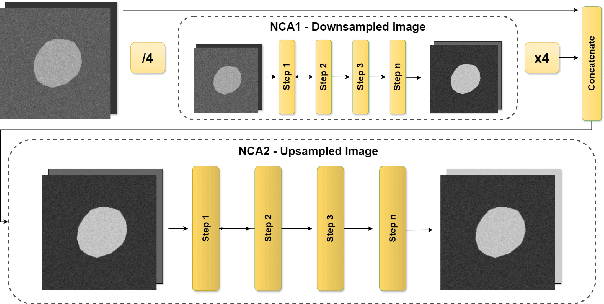
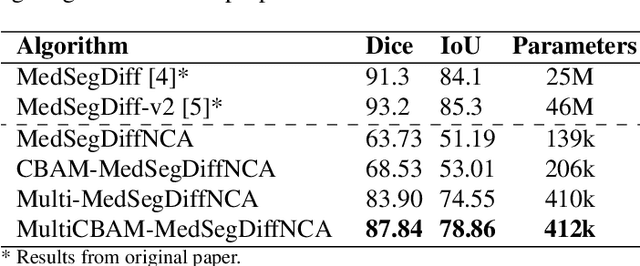
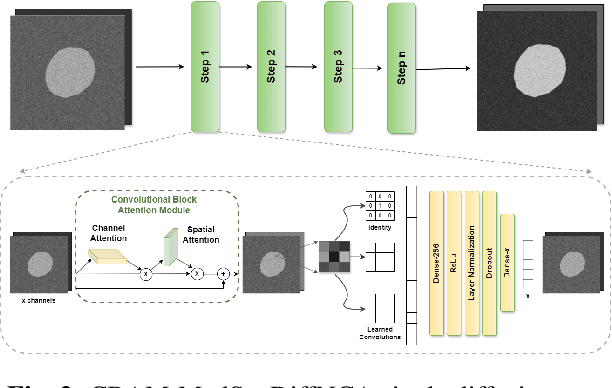
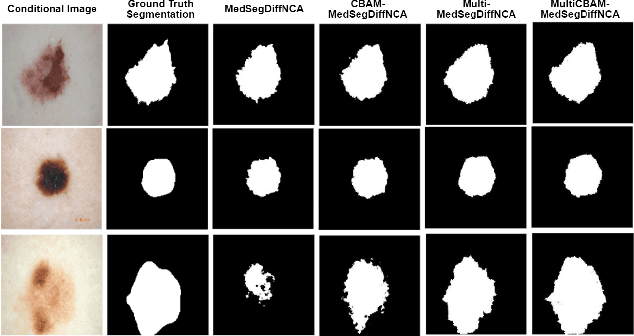
Abstract:Denoising Diffusion Models (DDMs) are widely used for high-quality image generation and medical image segmentation but often rely on Unet-based architectures, leading to high computational overhead, especially with high-resolution images. This work proposes three NCA-based improvements for diffusion-based medical image segmentation. First, Multi-MedSegDiffNCA uses a multilevel NCA framework to refine rough noise estimates generated by lower level NCA models. Second, CBAM-MedSegDiffNCA incorporates channel and spatial attention for improved segmentation. Third, MultiCBAM-MedSegDiffNCA combines these methods with a new RGB channel loss for semantic guidance. Evaluations on Lesion segmentation show that MultiCBAM-MedSegDiffNCA matches Unet-based model performance with dice score of 87.84% while using 60-110 times fewer parameters, offering a more efficient solution for low resource medical settings.
TractoEmbed: Modular Multi-level Embedding framework for white matter tract segmentation
Nov 12, 2024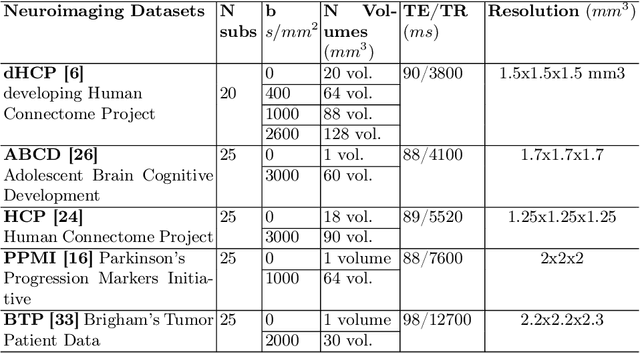
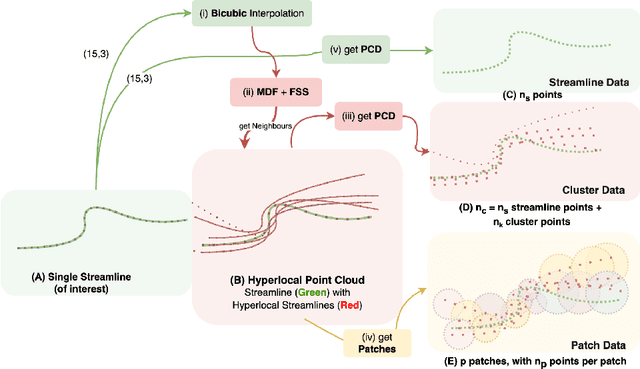
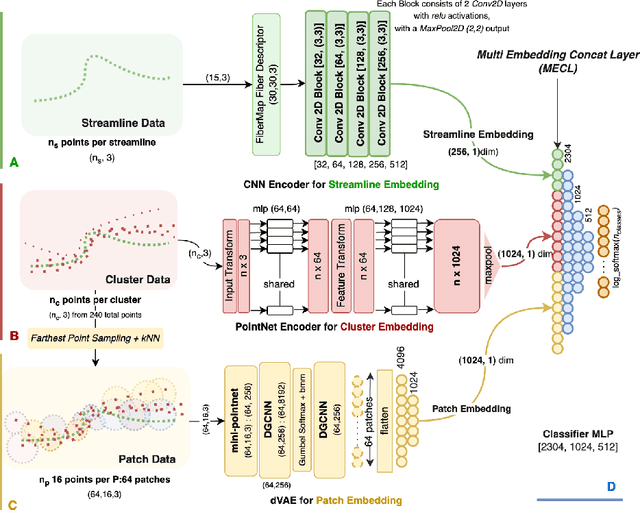
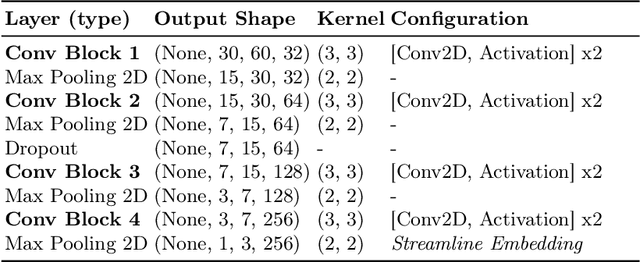
Abstract:White matter tract segmentation is crucial for studying brain structural connectivity and neurosurgical planning. However, segmentation remains challenging due to issues like class imbalance between major and minor tracts, structural similarity, subject variability, symmetric streamlines between hemispheres etc. To address these challenges, we propose TractoEmbed, a modular multi-level embedding framework, that encodes localized representations through learning tasks in respective encoders. In this paper, TractoEmbed introduces a novel hierarchical streamline data representation that captures maximum spatial information at each level i.e. individual streamlines, clusters, and patches. Experiments show that TractoEmbed outperforms state-of-the-art methods in white matter tract segmentation across different datasets, and spanning various age groups. The modular framework directly allows the integration of additional embeddings in future works.
Tract-RLFormer: A Tract-Specific RL policy based Decoder-only Transformer Network
Nov 08, 2024Abstract:Fiber tractography is a cornerstone of neuroimaging, enabling the detailed mapping of the brain's white matter pathways through diffusion MRI. This is crucial for understanding brain connectivity and function, making it a valuable tool in neurological applications. Despite its importance, tractography faces challenges due to its complexity and susceptibility to false positives, misrepresenting vital pathways. To address these issues, recent strategies have shifted towards deep learning, utilizing supervised learning, which depends on precise ground truth, or reinforcement learning, which operates without it. In this work, we propose Tract-RLFormer, a network utilizing both supervised and reinforcement learning, in a two-stage policy refinement process that markedly improves the accuracy and generalizability across various data-sets. By employing a tract-specific approach, our network directly delineates the tracts of interest, bypassing the traditional segmentation process. Through rigorous validation on datasets such as TractoInferno, HCP, and ISMRM-2015, our methodology demonstrates a leap forward in tractography, showcasing its ability to accurately map the brain's white matter tracts.
Unified Anomaly Detection methods on Edge Device using Knowledge Distillation and Quantization
Jul 03, 2024



Abstract:With the rapid advances in deep learning and smart manufacturing in Industry 4.0, there is an imperative for high-throughput, high-performance, and fully integrated visual inspection systems. Most anomaly detection approaches using defect detection datasets, such as MVTec AD, employ one-class models that require fitting separate models for each class. On the contrary, unified models eliminate the need for fitting separate models for each class and significantly reduce cost and memory requirements. Thus, in this work, we experiment with considering a unified multi-class setup. Our experimental study shows that multi-class models perform at par with one-class models for the standard MVTec AD dataset. Hence, this indicates that there may not be a need to learn separate object/class-wise models when the object classes are significantly different from each other, as is the case of the dataset considered. Furthermore, we have deployed three different unified lightweight architectures on the CPU and an edge device (NVIDIA Jetson Xavier NX). We analyze the quantized multi-class anomaly detection models in terms of latency and memory requirements for deployment on the edge device while comparing quantization-aware training (QAT) and post-training quantization (PTQ) for performance at different precision widths. In addition, we explored two different methods of calibration required in post-training scenarios and show that one of them performs notably better, highlighting its importance for unsupervised tasks. Due to quantization, the performance drop in PTQ is further compensated by QAT, which yields at par performance with the original 32-bit Floating point in two of the models considered.
Attend, Distill, Detect: Attention-aware Entropy Distillation for Anomaly Detection
May 10, 2024



Abstract:Unsupervised anomaly detection encompasses diverse applications in industrial settings where a high-throughput and precision is imperative. Early works were centered around one-class-one-model paradigm, which poses significant challenges in large-scale production environments. Knowledge-distillation based multi-class anomaly detection promises a low latency with a reasonably good performance but with a significant drop as compared to one-class version. We propose a DCAM (Distributed Convolutional Attention Module) which improves the distillation process between teacher and student networks when there is a high variance among multiple classes or objects. Integrated multi-scale feature matching strategy to utilise a mixture of multi-level knowledge from the feature pyramid of the two networks, intuitively helping in detecting anomalies of varying sizes which is also an inherent problem in the multi-class scenario. Briefly, our DCAM module consists of Convolutional Attention blocks distributed across the feature maps of the student network, which essentially learns to masks the irrelevant information during student learning alleviating the "cross-class interference" problem. This process is accompanied by minimizing the relative entropy using KL-Divergence in Spatial dimension and a Channel-wise Cosine Similarity between the same feature maps of teacher and student. The losses enables to achieve scale-invariance and capture non-linear relationships. We also highlight that the DCAM module would only be used during training and not during inference as we only need the learned feature maps and losses for anomaly scoring and hence, gaining a performance gain of 3.92% than the multi-class baseline with a preserved latency.
Generating Visual Stimuli from EEG Recordings using Transformer-encoder based EEG encoder and GAN
Feb 15, 2024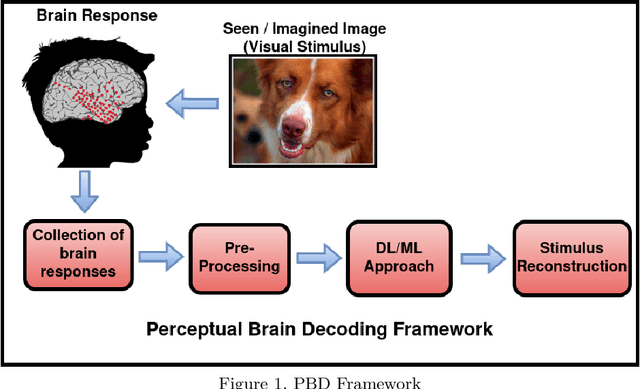
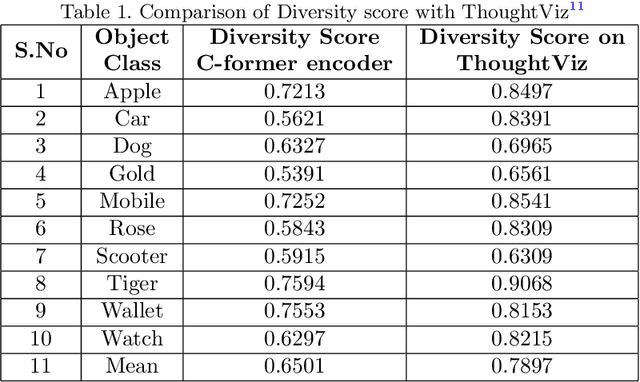

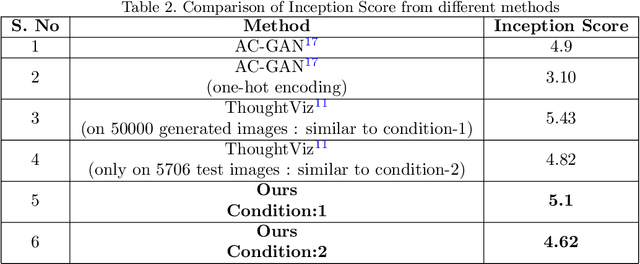
Abstract:In this study, we tackle a modern research challenge within the field of perceptual brain decoding, which revolves around synthesizing images from EEG signals using an adversarial deep learning framework. The specific objective is to recreate images belonging to various object categories by leveraging EEG recordings obtained while subjects view those images. To achieve this, we employ a Transformer-encoder based EEG encoder to produce EEG encodings, which serve as inputs to the generator component of the GAN network. Alongside the adversarial loss, we also incorporate perceptual loss to enhance the quality of the generated images.
Prediction of multitasking performance post-longitudinal tDCS via EEG-based functional connectivity and machine learning methods
Jan 31, 2024Abstract:Predicting and understanding the changes in cognitive performance, especially after a longitudinal intervention, is a fundamental goal in neuroscience. Longitudinal brain stimulation-based interventions like transcranial direct current stimulation (tDCS) induce short-term changes in the resting membrane potential and influence cognitive processes. However, very little research has been conducted on predicting these changes in cognitive performance post-intervention. In this research, we intend to address this gap in the literature by employing different EEG-based functional connectivity analyses and machine learning algorithms to predict changes in cognitive performance in a complex multitasking task. Forty subjects were divided into experimental and active-control conditions. On Day 1, all subjects executed a multitasking task with simultaneous 32-channel EEG being acquired. From Day 2 to Day 7, subjects in the experimental condition undertook 15 minutes of 2mA anodal tDCS stimulation during task training. Subjects in the active-control condition undertook 15 minutes of sham stimulation during task training. On Day 10, all subjects again executed the multitasking task with EEG acquisition. Source-level functional connectivity metrics, namely phase lag index and directed transfer function, were extracted from the EEG data on Day 1 and Day 10. Various machine learning models were employed to predict changes in cognitive performance. Results revealed that the multi-layer perceptron and directed transfer function recorded a cross-validation training RMSE of 5.11% and a test RMSE of 4.97%. We discuss the implications of our results in developing real-time cognitive state assessors for accurately predicting cognitive performance in dynamic and complex tasks post-tDCS intervention
Image Forgery Detection with Interpretability
Feb 02, 2022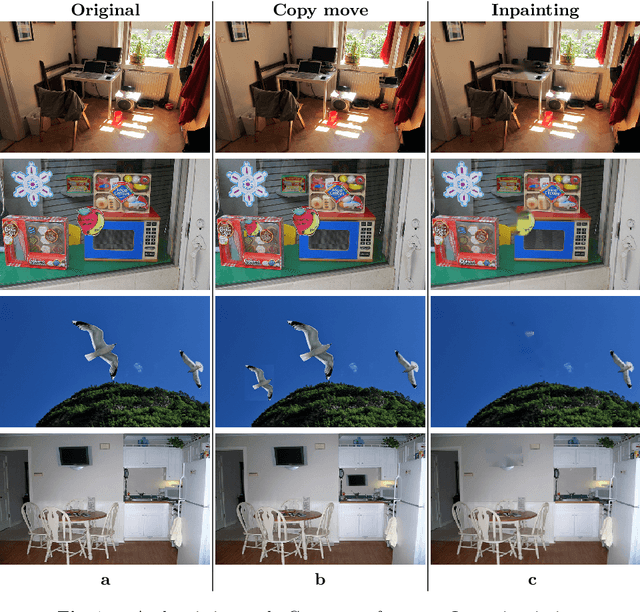
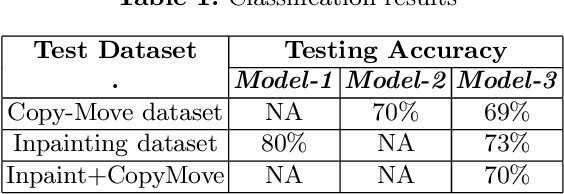


Abstract:In this work, we present a learning based method focusing on the convolutional neural network (CNN) architecture to detect these forgeries. We consider the detection of both copy-move forgeries and inpainting based forgeries. For these, we synthesize our own large dataset. In addition to classification, the focus is also on interpretability of the forgery detection. As the CNN classification yields the image-level label, it is important to understand if forged region has indeed contributed to the classification. For this purpose, we demonstrate using the Grad-CAM heatmap, that in various correctly classified examples, that the forged region is indeed the region contributing to the classification. Interestingly, this is also applicable for small forged regions, as is depicted in our results. Such an analysis can also help in establishing the reliability of the classification.
 Add to Chrome
Add to Chrome Add to Firefox
Add to Firefox Add to Edge
Add to Edge